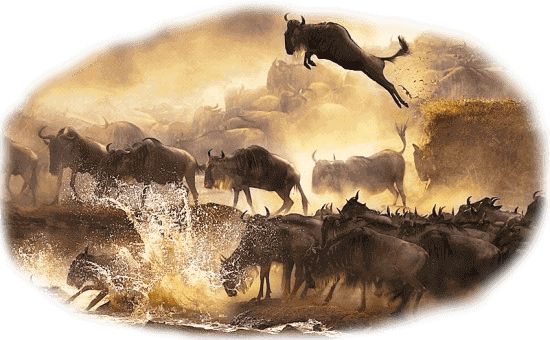 Kenya is an incredible travel destination that offers Spanish tourists a rich variety of experiences. From the iconic African safaris to the sun-kissed beaches and deep-rooted cultural heritage, the country is a paradise for travelers seeking adventure, relaxation, and authenticity. With direct flights increasingly available from Europe, Kenya is now more accessible than ever for Spanish visitors eager to discover East Africa's finest gems. One of the primary draws is the opportunity to witness Kenya's abundant wildlife. National parks such as the Masai Mara, Amboseli, and Tsavo provide Spanish tourists with the chance to observe elephants, lions, giraffes, and rhinos in their natural habitat. The Masai Mara, in particular, is home to the dramatic Great Migration, a must-see spectacle where millions of wildebeests and zebras cross vast savannahs. Game drives, guided tours, and luxury safari lodges enhance the experience, ensuring comfort while staying close to nature. Kenya's coastline is another unforgettable highlight. The Indian Ocean offers turquoise waters and powdery white sands, perfect for those looking to unwind. Diani Beach, Malindi, and Watamu are popular spots that blend luxury resorts with local culture. Water sports such as snorkeling, kite surfing, and scuba diving attract both novice and experienced adventurers. For those interested in marine life, the coral reefs and marine parks provide vibrant underwater ecosystems teeming with life. For a cultural twist, Kenya invites Spanish travelers to connect with its diverse communities and rich history. From the Swahili culture along the coast to the Maasai and Samburu tribes in the interior, Kenya's cultural mosaic is both colorful and enlightening. Visitors can explore ancient ruins like Gedi, visit traditional homesteads, or enjoy local cuisines influenced by African, Arabic, and Indian traditions. The Great Rift Valley adds a geological wonder to the journey, with its breathtaking escarpments, lakes, and hot springs. Spanish travelers will appreciate the warm hospitality, English-speaking guides, and well-developed tourism infrastructure. Whether it's a romantic honeymoon, a family holiday, or a solo backpacking trip, Kenya caters to a wide range of preferences and budgets. When planning a trip to Africa, the best tourist attractions in Kenya for Spanish travelers promise an experience that blends adventure, nature, and culture in the most compelling way. Whether you're tracking lions across golden savannahs, snorkeling in clear coastal waters, or sharing stories with local tribes, every moment in Kenya feels like a unique chapter in a travel diary. The country's diverse geography ranges from alpine mountains to sun-drenched beaches and vast plains teeming with wildlife, ensuring that no two experiences are ever the same. Spanish visitors often highlight the warmth of Kenyan hospitality, where every greeting feels genuine and every guide eager to share local insights. Add to this the ease of travel logistics, quality accommodation options, and a growing focus on sustainable tourism, and it's easy to see why Kenya is fast becoming a favorite destination. It’s not just a vacation spot; it’s a gateway to unforgettable memories and meaningful adventures.
Kenya is an incredible travel destination that offers Spanish tourists a rich variety of experiences. From the iconic African safaris to the sun-kissed beaches and deep-rooted cultural heritage, the country is a paradise for travelers seeking adventure, relaxation, and authenticity. With direct flights increasingly available from Europe, Kenya is now more accessible than ever for Spanish visitors eager to discover East Africa's finest gems. One of the primary draws is the opportunity to witness Kenya's abundant wildlife. National parks such as the Masai Mara, Amboseli, and Tsavo provide Spanish tourists with the chance to observe elephants, lions, giraffes, and rhinos in their natural habitat. The Masai Mara, in particular, is home to the dramatic Great Migration, a must-see spectacle where millions of wildebeests and zebras cross vast savannahs. Game drives, guided tours, and luxury safari lodges enhance the experience, ensuring comfort while staying close to nature. Kenya's coastline is another unforgettable highlight. The Indian Ocean offers turquoise waters and powdery white sands, perfect for those looking to unwind. Diani Beach, Malindi, and Watamu are popular spots that blend luxury resorts with local culture. Water sports such as snorkeling, kite surfing, and scuba diving attract both novice and experienced adventurers. For those interested in marine life, the coral reefs and marine parks provide vibrant underwater ecosystems teeming with life. For a cultural twist, Kenya invites Spanish travelers to connect with its diverse communities and rich history. From the Swahili culture along the coast to the Maasai and Samburu tribes in the interior, Kenya's cultural mosaic is both colorful and enlightening. Visitors can explore ancient ruins like Gedi, visit traditional homesteads, or enjoy local cuisines influenced by African, Arabic, and Indian traditions. The Great Rift Valley adds a geological wonder to the journey, with its breathtaking escarpments, lakes, and hot springs. Spanish travelers will appreciate the warm hospitality, English-speaking guides, and well-developed tourism infrastructure. Whether it's a romantic honeymoon, a family holiday, or a solo backpacking trip, Kenya caters to a wide range of preferences and budgets. When planning a trip to Africa, the best tourist attractions in Kenya for Spanish travelers promise an experience that blends adventure, nature, and culture in the most compelling way. Whether you're tracking lions across golden savannahs, snorkeling in clear coastal waters, or sharing stories with local tribes, every moment in Kenya feels like a unique chapter in a travel diary. The country's diverse geography ranges from alpine mountains to sun-drenched beaches and vast plains teeming with wildlife, ensuring that no two experiences are ever the same. Spanish visitors often highlight the warmth of Kenyan hospitality, where every greeting feels genuine and every guide eager to share local insights. Add to this the ease of travel logistics, quality accommodation options, and a growing focus on sustainable tourism, and it's easy to see why Kenya is fast becoming a favorite destination. It’s not just a vacation spot; it’s a gateway to unforgettable memories and meaningful adventures.
Must-See Kenyan Attractions for Spanish Travelers
| Attraction | Type | Location (Region) | Highlight |
|---|---|---|---|
| Maasai Mara National Reserve | Wildlife | Narok County | World-famous safari park; see the Great Migration of wildebeest, zebras and big cats. |
| Amboseli National Park | Wildlife | Kajiado County | Iconic elephant herds against the backdrop of Mount Kilimanjaro. |
| Lake Nakuru National Park | Wildlife | Nakuru County | Rift Valley flamingo lake and sanctuary for black & white rhinos. |
| Hell’s Gate National Park | Landscape | Nakuru County | Dramatic gorges, cliffs and hot springs ideal for hiking and biking. |
| Mount Kenya National Park | Landscape | Central Kenya (Mount Kenya) | Alpine treks on Africa’s second-highest peak with stunning highland views. |
| Diani Beach | Beach | Kwale County (Coast) | Powdery white sand, clear turquoise water and water sports in a peaceful Indian Ocean setting. |
| Lamu Old Town | Cultural | Lamu County (Lamu Island) | UNESCO Swahili town with coral-stone architecture and vibrant Islamic heritage. |
| Fort Jesus (Mombasa) | Cultural | Mombasa County | 16th-century Portuguese fort; UNESCO site reflecting centuries of cultural exchange. |
Kenya Wildlife Safaris and Landscape Adventures for Spanish Tourists
Kenya is a land of contrast, offering dramatic landscapes, rich biodiversity, and cultural heritage that captivates travelers from all walks of life. For Spanish tourists seeking authentic experiences, a Kenyan wildlife safari and scenic adventure is the perfect way to explore this East African jewel. The Masai Mara National Reserve is one of the most iconic safari destinations in the world. It's particularly famous for the Great Migration, where millions of wildebeest and zebras journey across the plains in search of greener pastures. This natural phenomenon provides an extraordinary opportunity to witness predator-prey interactions and observe the famed Big Five animals in their natural habitat. Amboseli National Park is another favorite, especially for those interested in photographing elephants with the snow-capped peak of Mount Kilimanjaro as a backdrop. The park is also home to a variety of birds and offers stunning views that appeal to both wildlife lovers and landscape photographers. Heading north, tourists can explore Samburu National Reserve, which offers a less-crowded safari experience. Unique species like the Grevy's zebra, reticulated giraffe, and Somali ostrich thrive here. Visitors often combine a safari in Samburu with cultural visits to meet the indigenous Samburu people, who are closely related to the Maasai and are known for their vibrant traditions and colorful dress. In addition to its impressive reserves, Kenya boasts breathtaking geographic features such as the Great Rift Valley. This massive trench stretches across the country and is dotted with beautiful lakes like Nakuru and Naivasha. Lake Nakuru is well known for its seasonal flocks of flamingos and a sanctuary for endangered rhinos. Lake Naivasha, surrounded by flower farms and geothermal activity, is ideal for boating and bird watching. Spanish visitors also enjoy exploring Mount Kenya, Africa's second-highest peak. Whether it's climbing to the summit or hiking through the lower forests, this UNESCO World Heritage site offers a variety of trails suited to different skill levels. Along the way, trekkers are rewarded with panoramic views and a chance to spot unique alpine flora and fauna. For those interested in combining adventure with learning, many tour operators provide guided excursions that include wildlife interpretation, conservation education, and community-based tourism. This approach allows Spanish tourists to appreciate the deeper significance of the landscapes and wildlife they encounter. Without a doubt, one of the top places to visit in Kenya for tourists from Spain is the diverse combination of safaris, mountains, and lake regions. These destinations are not only visually stunning but also deeply immersive. The sweeping savannahs of the Masai Mara, where lions roam freely and wildebeests thunder across the plains, offer a front-row seat to some of the most incredible wildlife spectacles on Earth. Meanwhile, the misty trails of Mount Kenya provide a tranquil escape for trekkers looking to challenge themselves amid breathtaking alpine scenery. The Great Rift Valley, with its chain of freshwater lakes and dramatic escarpments, adds geological intrigue and rich biodiversity to the mix. Here, travelers can marvel at flamingo-covered shores or take a boat ride to see hippos and fish eagles up close. Together, these regions offer a rich tapestry of natural beauty and cultural encounters that make a journey through Kenya unforgettable for any visitor from Spain.
Experience Maasai Mara Safari and Big Five Wildlife in Kenya
The Masai Mara National Reserve is arguably one of the most iconic wildlife destinations in the world. Located in southwestern Kenya, it offers Spanish tourists an unparalleled chance to witness Africa's majestic Big Five lion, elephant, buffalo, leopard, and rhinoceros roaming freely across open savannahs. The park is especially popular during the annual Great Migration, a world-famous spectacle in which millions of wildebeests, zebras, and gazelles thunder across the plains in search of greener pastures. Safaris in the Masai Mara are designed for every type of traveler. From luxury lodges with panoramic views to budget-friendly campsites with immersive cultural experiences, visitors can choose how they wish to explore the wild. Guided game drives, typically offered twice daily, increase the likelihood of spotting elusive predators like leopards or cheetahs on the hunt. The Maasai people, indigenous to this region, also offer cultural insights that enrich the experience. Many safari itineraries include visits to Maasai villages, where guests can learn about traditional customs, dances, and handicrafts. This connection to the local community adds a meaningful layer to any trip and helps support sustainable tourism initiatives. Aside from the Masai Mara, other top parks like Tsavo, Amboseli, and Lake Nakuru provide complementary safari experiences. Amboseli, for instance, is renowned for its large elephant herds and dramatic views of Mount Kilimanjaro. Lake Nakuru offers a unique chance to see flamingos and endangered black and white rhinos in a stunning lakeside setting. For Spanish travelers wondering where to see the Big Five in Kenya as a Spanish tourist, the answer begins with the Masai Mara. It provides the best combination of wildlife concentration, scenic beauty, and well-developed tourism infrastructure tailored to international visitors. Tour operators often include translators or Spanish-speaking guides to enhance communication and ensure a more personalized experience. No matter the time of year, the Masai Mara remains a spectacular destination. Dry seasons (July to October) are ideal for wildlife visibility, while the green seasons (November to June) provide lush landscapes and fewer crowds. The versatility of safari packages also allows travelers to combine game drives with balloon safaris, bush dinners, and even photography workshops. A visit to the Masai Mara offers more than animal sightings; it delivers a profound connection to nature, local culture, and the rhythms of the wild. It's a bucket-list destination that continues to inspire awe and respect for Africa's incredible biodiversity.
Kenya Coastal Beaches and Exotic Islands for Spanish Tourists
Kenya's coastline along the Indian Ocean is a treasure trove of natural beauty and cultural charm, making it an irresistible destination for Spanish adventurers. From pristine white-sand beaches to hidden islands and historic coastal towns, the region offers a refreshing escape that blends relaxation with exploration. Diani Beach, located south of Mombasa, is perhaps the most famous seaside destination in Kenya. With its powder-soft sands, swaying palm trees, and turquoise waters, it provides the ideal setting for sunbathing, swimming, and beach sports. Spanish tourists can enjoy activities like kitesurfing, snorkeling, or taking a traditional dhow cruise along the coast during sunset. Further up the coast lies Watamu, a serene beach town known for its marine national park and coral reefs. This is a hotspot for diving and marine conservation, where visitors can swim among vibrant fish species and even spot sea turtles or dolphins. Malindi, another historic beach town, offers a mix of Italian-influenced architecture, Swahili culture, and excellent seafood cuisine. For those seeking solitude and a touch of exclusivity, the Lamu Archipelago delivers. This collection of islands, led by Lamu Island itself, transports visitors to another era with its narrow alleyways, donkey carts, and stone houses adorned with intricate wooden doors. Declared a UNESCO World Heritage Site, Lamu Town is one of the oldest continuously inhabited settlements in East Africa. In addition to sun and sea, the coast reveals a rich tapestry of history. Spanish visitors can explore the ancient ruins of Gedi near Watamu or visit Fort Jesus in Mombasa, a 16th-century fortress built by the Portuguese and now a museum chronicling centuries of trade and conquest along the Swahili coast. Spanish adventurers will find the region’s hospitality warm and welcoming, with resorts and boutique lodges offering services tailored to international guests. Whether indulging in fresh seafood under a thatched beachside pavilion or learning how to prepare Swahili dishes in a local cooking class, there's always a cultural layer to enrich the experience. Among the must-see destinations in Kenya for Spanish adventurers, the coastal belt stands out not only for its beauty but also for the remarkable diversity of experiences it offers. This sun-drenched stretch along the Indian Ocean seamlessly combines scenic relaxation with rich cultural immersion and thrilling outdoor activities. Visitors can bask on palm-lined beaches with clear turquoise waters one day, and the next, plunge into the vibrant marine life of coral reefs or sail a dhow at sunset. What sets the Kenyan coast apart is its unique ability to offer both tranquility and excitement in equal measure. Spanish adventurers can explore ancient Swahili towns with storied histories, sample flavorful local dishes influenced by African, Arabic, and Indian culinary traditions, and participate in eco-conscious marine conservation projects. Whether enjoying luxury spa retreats, deep-sea fishing, or wandering the narrow lanes of Lamu Old Town, the coastal experience feels both exotic and deeply grounding. Together with inland safaris and mountain treks, Kenya’s coastline creates a holistic adventure. It’s an enchanting destination that leaves travelers with unforgettable stories, stunning photographs, and a renewed appreciation for the beauty and diversity of East Africa.
Relax at Diani Beach and Explore Coastal Resort Towns in Kenya
Kenya's coastal region offers much more than just beautiful scenery it's a gateway to adventure, culture, and rest. For Spanish tourists, it stands out as a tropical destination that caters to every kind of traveler. From historical sites to thrilling ocean activities, the area delivers memorable moments by the Indian Ocean. Here are some top coastal experiences:
- Diani Beach: Known for its soft white sand and swaying palm trees, Diani Beach is a premier destination for sunbathers and water sports enthusiasts. The calm, clear waters are ideal for swimming and snorkeling, while more adventurous visitors can try their hand at kitesurfing or jet skiing. The beach also features vibrant nightlife, beach bars, and seaside dining, offering something for every taste.
- Watamu Marine National Park: This protected marine area is a dream for divers and snorkelers. The coral reefs are home to a stunning variety of marine species, including sea turtles, colorful fish, and sometimes even whale sharks. Guided tours and eco-conscious diving schools enhance the underwater adventure while supporting reef conservation efforts.
- Malindi Town: A historic Swahili settlement with layers of Arab, Portuguese, and Italian influence, Malindi offers a unique blend of culture and leisure. Tourists can explore the centuries-old Vasco da Gama Pillar, browse lively local markets, or relax in luxury beachfront resorts. It’s an ideal destination for those who appreciate a mix of history, culture, and seaside beauty.
- Lamu Island: Stepping onto Lamu Island feels like traveling back in time. With no cars on the island, transport is by donkey, bicycle, or boat. Narrow alleys, intricately carved wooden doors, and traditional Swahili architecture characterize this UNESCO World Heritage Site. Visitors can tour historic mosques, visit museums, or simply soak in the slow-paced, authentic island lifestyle.
These activities make up the kind of Kenya safari experiences popular with Spanish tourists who crave variety and authenticity along the coast.
Kenya Cultural Heritage and Historic Sites for Spanish Tourists
 Kenya offers a rich tapestry of cultural heritage that deeply resonates with Spanish tourists seeking immersive and meaningful travel experiences. The country's long history and ethnic diversity mean that culture is woven into everyday life, from coastal towns influenced by Swahili and Arabic traditions to the ancestral homelands of indigenous communities like the Maasai, Samburu, and Kikuyu. A visit to the coastal region introduces travelers to the Swahili way of life, particularly in towns like Lamu and Mombasa. Lamu Island, a UNESCO World Heritage Site, features well-preserved Swahili architecture, narrow alleyways, and intricately carved doors that echo centuries of maritime trade. In Mombasa, Fort Jesus offers a historical perspective, showcasing Portuguese, Arab, and British influences through centuries of colonial interaction. These coastal centers are perfect for those who enjoy a blend of history, art, and sea views. In the central and northern highlands, Spanish tourists can engage with pastoralist communities such as the Maasai and Samburu. Visiting a traditional manyatta (homestead), observing local dances, and participating in beadwork or cooking classes offer travelers a window into daily life and indigenous customs. Many cultural tours are led by local guides who provide context and meaning behind these traditions, adding depth to the overall experience. The Great Rift Valley is another cultural and historical landmark. Besides its geological wonder, the region is home to communities that have preserved their heritage while adapting to modern influences. Spanish visitors can tour museums, archaeological sites like Kariandusi, and interact with local artisans producing pottery, jewelry, and woven goods. Kenya's urban centers also contribute to its cultural richness. Nairobi, the capital city, boasts art galleries, music venues, and bustling markets that reflect a more contemporary cultural scene. The Bomas of Kenya, a cultural center just outside the city, presents traditional dances and village reconstructions from across the country, providing a convenient introduction to Kenya's many ethnic identities. For culinary enthusiasts, Kenya offers a diverse menu influenced by African, Indian, and Arab cuisines. Sampling local dishes such as nyama choma (grilled meat), samosas, and ugali (maize meal) gives travelers an additional sensory connection to the country. Cooking classes, food tours, and market visits are increasingly popular additions to cultural itineraries. Cultural experiences in Kenya for Spanish tourists go beyond sightseeing they offer opportunities for learning, connection, and mutual respect. By engaging with Kenya's living traditions, visitors not only enrich their journey but also contribute to preserving and appreciating the heritage of local communities.
Kenya offers a rich tapestry of cultural heritage that deeply resonates with Spanish tourists seeking immersive and meaningful travel experiences. The country's long history and ethnic diversity mean that culture is woven into everyday life, from coastal towns influenced by Swahili and Arabic traditions to the ancestral homelands of indigenous communities like the Maasai, Samburu, and Kikuyu. A visit to the coastal region introduces travelers to the Swahili way of life, particularly in towns like Lamu and Mombasa. Lamu Island, a UNESCO World Heritage Site, features well-preserved Swahili architecture, narrow alleyways, and intricately carved doors that echo centuries of maritime trade. In Mombasa, Fort Jesus offers a historical perspective, showcasing Portuguese, Arab, and British influences through centuries of colonial interaction. These coastal centers are perfect for those who enjoy a blend of history, art, and sea views. In the central and northern highlands, Spanish tourists can engage with pastoralist communities such as the Maasai and Samburu. Visiting a traditional manyatta (homestead), observing local dances, and participating in beadwork or cooking classes offer travelers a window into daily life and indigenous customs. Many cultural tours are led by local guides who provide context and meaning behind these traditions, adding depth to the overall experience. The Great Rift Valley is another cultural and historical landmark. Besides its geological wonder, the region is home to communities that have preserved their heritage while adapting to modern influences. Spanish visitors can tour museums, archaeological sites like Kariandusi, and interact with local artisans producing pottery, jewelry, and woven goods. Kenya's urban centers also contribute to its cultural richness. Nairobi, the capital city, boasts art galleries, music venues, and bustling markets that reflect a more contemporary cultural scene. The Bomas of Kenya, a cultural center just outside the city, presents traditional dances and village reconstructions from across the country, providing a convenient introduction to Kenya's many ethnic identities. For culinary enthusiasts, Kenya offers a diverse menu influenced by African, Indian, and Arab cuisines. Sampling local dishes such as nyama choma (grilled meat), samosas, and ugali (maize meal) gives travelers an additional sensory connection to the country. Cooking classes, food tours, and market visits are increasingly popular additions to cultural itineraries. Cultural experiences in Kenya for Spanish tourists go beyond sightseeing they offer opportunities for learning, connection, and mutual respect. By engaging with Kenya's living traditions, visitors not only enrich their journey but also contribute to preserving and appreciating the heritage of local communities.
Explore Kenya's Vibrant Swahili Culture and UNESCO Heritage Sites
Kenya's Swahili Coast is a cultural gem that blends African, Arab, and European influences, offering Spanish travelers a fascinating journey through centuries of trade, migration, and tradition. Stretching along the Indian Ocean, this region is home to some of the most iconic heritage sites and living cultures in East Africa. Lamu Island stands out as the crown jewel of Swahili culture in Kenya. As a UNESCO World Heritage Site, the island preserves centuries-old Swahili architecture, narrow alleyways, coral stone buildings, and elaborately carved doors. With no cars and a relaxed, timeless atmosphere, Lamu offers a rare opportunity to experience a way of life that has remained largely unchanged for generations. Visitors can stroll through Lamu Old Town, visit the Lamu Museum, or witness vibrant local festivals like Maulidi. Mombasa, Kenya's coastal gateway, is another important stop. Its historic district, Old Town, reflects the city's multicultural past through Portuguese fortresses, Arab-influenced houses, and ancient mosques. Fort Jesus, built by the Portuguese in the 16th century and now a UNESCO-listed site, provides insights into the colonial history and maritime conflicts that shaped the region. Spanish tourists can also explore Swahili cuisine here, sampling dishes like pilau, biryani, and fresh seafood along the coast. Beyond the cities, lesser-known sites like the Gedi Ruins near Watamu tell the story of a once-thriving Swahili town lost to time. Surrounded by coastal forests, this archaeological site features the remains of mosques, homes, and a palace, offering a glimpse into the region's golden age of commerce and Islamic scholarship. Swahili culture continues to thrive in music, dance, dress, and language. Spanish visitors will find the hospitality of the coastal communities warm and welcoming. Engaging with locals through guided cultural walks, traditional dhow sailing, or coastal cooking classes makes the experience even more authentic and enriching. Kenya's Swahili heritage is not just a relic of the past but a vibrant and evolving part of its identity. For travelers seeking more than scenery, it offers a deeply human connection through shared stories, preserved architecture, and living traditions. It's an essential stop for anyone who wants to understand the soul of Kenya beyond the safari.
FAQs on Must-See Kenya Attractions for Spanish Tourists
Kenya is a diverse and captivating travel destination that offers Spanish tourists an unforgettable mix of wildlife, culture, and coastal charm. Whether you're drawn by the allure of spotting the Big Five on safari, relaxing on sun-drenched beaches, or immersing yourself in vibrant local traditions, Kenya caters to a wide variety of travel interests. The country’s accessibility, warm hospitality, and well-developed tourism infrastructure make it increasingly appealing to travelers from Spain. As more Spanish visitors choose Kenya for their holidays, a number of common questions arise from visa requirements and safety to the best places to explore. Understanding what to expect before you go can help maximize your experience and allow for a smoother, more enriching journey. Here are some of the most frequently asked questions each answered with practical insight to help guide your travel planning and spark inspiration for your Kenyan adventure.
- What are the best safari parks in Kenya for Spanish tourists? The Masai Mara National Reserve is world-famous for its high concentration of wildlife and dramatic savannah landscapes. Spanish tourists can enjoy guided game drives with expert trackers who help spot the Big Five: lion, leopard, elephant, rhino, and buffalo. Amboseli National Park is another gem, offering remarkable views of Mount Kilimanjaro and close encounters with large elephant herds. For those seeking quieter, less-touristed options, Samburu National Reserve in the north showcases rare species and unique cultural ties with the Samburu people.
- When is the best time to visit Kenya for wildlife viewing? The dry seasons from June to October and January to February are ideal for spotting wildlife as animals gather near waterholes. These months also offer more comfortable weather and better road conditions. The Great Migration, typically peaking in August in the Masai Mara, is a bucket-list spectacle that draws photographers and nature lovers from around the world.
- Are there beach destinations in Kenya for relaxation? Absolutely. Kenya's coastline is lined with tropical beaches that offer peace and adventure in equal measure. Diani Beach is known for its soft sand, coral reefs, and modern resorts. Watamu is a haven for marine life and eco-tourism, while Malindi blends beach luxury with a dose of Swahili history. All three destinations feature activities such as snorkeling, kite surfing, dhow sailing, and fresh seafood dining.
- What cultural sites can Spanish tourists explore in Kenya? Spanish tourists can discover Kenya's rich cultural heritage in places like Lamu Old Town, a UNESCO World Heritage Site known for Swahili architecture, and Fort Jesus in Mombasa, which tells the story of centuries of trade and colonial power. Inland, travelers can visit Maasai and Samburu villages to experience indigenous lifestyles, traditional dances, and handicrafts. These excursions offer deep, authentic cultural experiences in Kenya for Spanish tourists.
- Is it safe for Spanish tourists to travel around Kenya? Yes, most tourist destinations in Kenya are safe. It is advisable to book with reputable tour companies, follow local guidance, and stay aware of your surroundings, especially in urban areas. Many hotels and tour operators cater specifically to international tourists and employ multilingual staff, including Spanish-speaking guides.
- Do I need a visa to travel to Kenya from Spain? Yes, Spanish citizens must apply for an electronic Travel Authorization (eTA) online before arriving in Kenya. The process is straightforward and typically processed within a few days. Visitors should ensure their passport is valid for at least six months from the date of entry and have proof of onward travel.
These FAQs aim to simplify the planning process and help Spanish travelers enjoy Kenya with confidence and curiosity. From savannahs to the sea, every region promises unforgettable memories.






